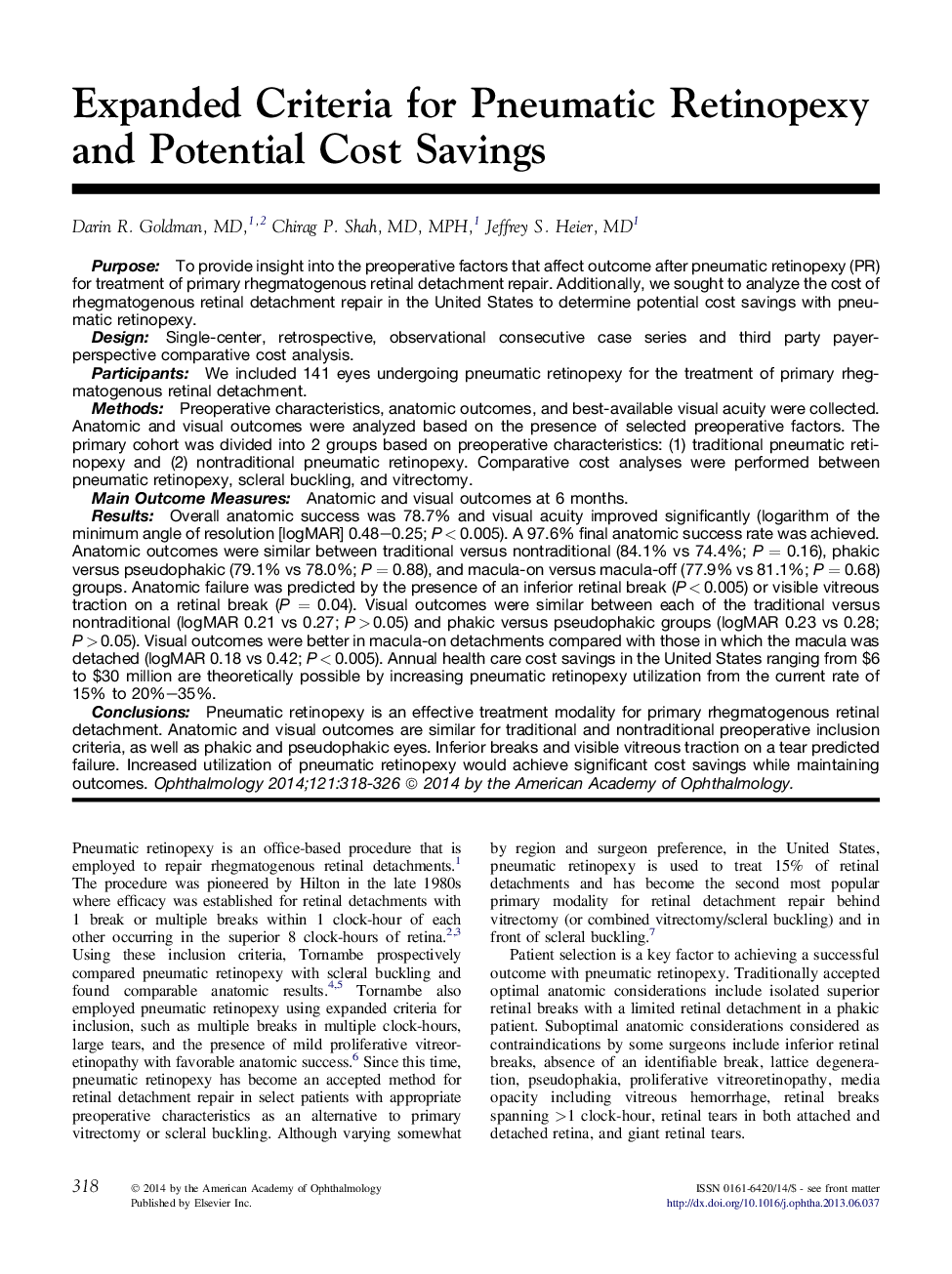| کد مقاله | کد نشریه | سال انتشار | مقاله انگلیسی | نسخه تمام متن |
|---|---|---|---|---|
| 4025954 | 1262414 | 2014 | 9 صفحه PDF | دانلود رایگان |
PurposeTo provide insight into the preoperative factors that affect outcome after pneumatic retinopexy (PR) for treatment of primary rhegmatogenous retinal detachment repair. Additionally, we sought to analyze the cost of rhegmatogenous retinal detachment repair in the United States to determine potential cost savings with pneumatic retinopexy.DesignSingle-center, retrospective, observational consecutive case series and third party payer-perspective comparative cost analysis.ParticipantsWe included 141 eyes undergoing pneumatic retinopexy for the treatment of primary rhegmatogenous retinal detachment.MethodsPreoperative characteristics, anatomic outcomes, and best-available visual acuity were collected. Anatomic and visual outcomes were analyzed based on the presence of selected preoperative factors. The primary cohort was divided into 2 groups based on preoperative characteristics: (1) traditional pneumatic retinopexy and (2) nontraditional pneumatic retinopexy. Comparative cost analyses were performed between pneumatic retinopexy, scleral buckling, and vitrectomy.Main Outcome MeasuresAnatomic and visual outcomes at 6 months.ResultsOverall anatomic success was 78.7% and visual acuity improved significantly (logarithm of the minimum angle of resolution [logMAR] 0.48–0.25; P < 0.005). A 97.6% final anatomic success rate was achieved. Anatomic outcomes were similar between traditional versus nontraditional (84.1% vs 74.4%; P = 0.16), phakic versus pseudophakic (79.1% vs 78.0%; P = 0.88), and macula-on versus macula-off (77.9% vs 81.1%; P = 0.68) groups. Anatomic failure was predicted by the presence of an inferior retinal break (P < 0.005) or visible vitreous traction on a retinal break (P = 0.04). Visual outcomes were similar between each of the traditional versus nontraditional (logMAR 0.21 vs 0.27; P > 0.05) and phakic versus pseudophakic groups (logMAR 0.23 vs 0.28; P > 0.05). Visual outcomes were better in macula-on detachments compared with those in which the macula was detached (logMAR 0.18 vs 0.42; P < 0.005). Annual health care cost savings in the United States ranging from $6 to $30 million are theoretically possible by increasing pneumatic retinopexy utilization from the current rate of 15% to 20%–35%.ConclusionsPneumatic retinopexy is an effective treatment modality for primary rhegmatogenous retinal detachment. Anatomic and visual outcomes are similar for traditional and nontraditional preoperative inclusion criteria, as well as phakic and pseudophakic eyes. Inferior breaks and visible vitreous traction on a tear predicted failure. Increased utilization of pneumatic retinopexy would achieve significant cost savings while maintaining outcomes.
Journal: Ophthalmology - Volume 121, Issue 1, January 2014, Pages 318–326
